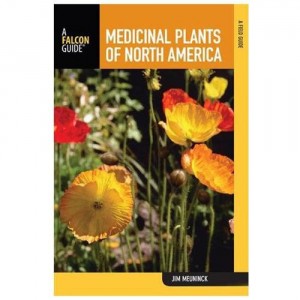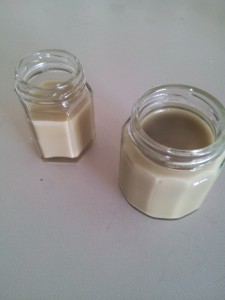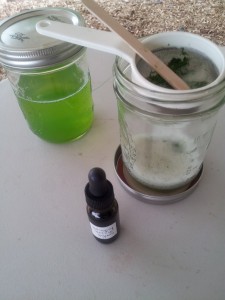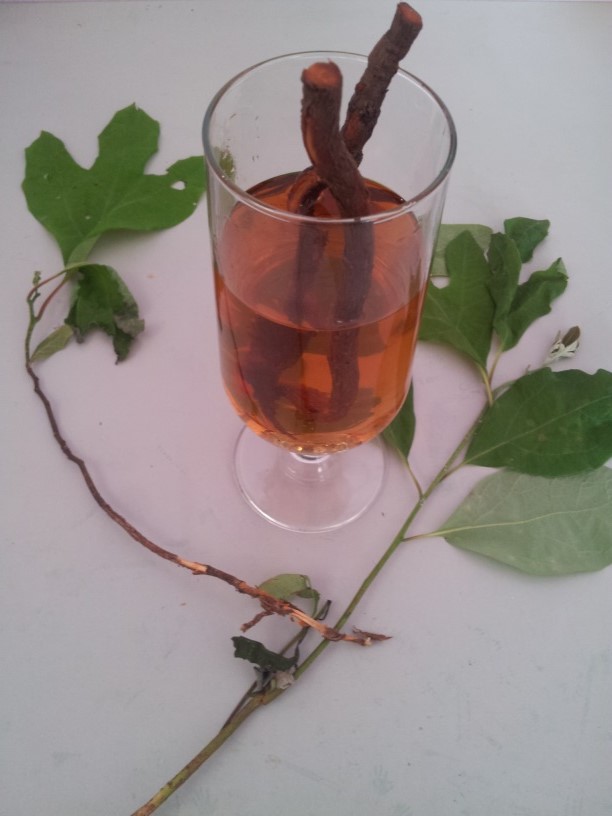Hands-on Learning with Plants
By Nicki, Youth Programs Developer, Lewis Ginter Botanical Garden
The Children’s Garden had the pleasure of hosting Vivien Fergusson of Collegiate School for her senior final project. Vivien approached me for guidance with her interest in medicinal uses of plants as well as Virginia natives and wildflowers. The Children’s Garden agreed to support her throughout her project: Vivien spent three weeks on-site developing and researching her interest with medicinal plants as her primary focus. As a host site, Lewis Ginter provided resources such as access to Garden Guides and staff, and access to our plant catalogs through the Lora Robins Library. Vivien also gained special access to the Herbarium Virginicum, our dried plants collection hosted in collaboration with Virginia Commonwealth University and consisting of over 17,000 specimens.
With the assistance of staff, Vivien was also able to have access to our live plant collections. This offered real-life learning experiences by directly connecting her to plants. In Vivien’s own words she relays the importance of hands-on learning at the Garden; “Lewis Ginter is a botanical wonderland: every plant that I was ever curious about can be found somewhere in the garden. Observing a plant in real life is so much more powerful than simply studying it in a book. It adds a dimension of realness and tangibility that really enhanced my understanding of the plant.”
I provided a basic guide to help Vivien self-sufficiently connect with our plants by loaning her my copy Jim Meuninck’s Medicinal Plants of North America Field Guide, bookmarking the exact location of the plants listed in the field guide with sticky notes, many of which were in the Children’s Garden.
Vivien also kept a nature journal to take notes on, sketch, and preserve examples of the plants she researched. Nature journals are a great tool for botanical research. Many great naturalists and scientists such as John Muir, John James Audubon, Charles Darwin, and Rachel Carson kept nature journals. The Sierra Club guide for starting a nature journal and Smithsonian Institution have great information on how to get started with nature journaling.
With the help of her field guide and nature journal in hand, Vivien was able to gain proactive hands-on learning. She was able to pick what species she wanted to focus on, and as her project progressed, she was able to adjust her topic subject. We realized together that Vivien was mostly interested in experimenting with plant materials. We went through the process of making a variety of plant medicines such as salves, teas, inhalants, and washes. Local herbalist Jonathan Citron provided us with examples of tinctures and walked Vivien through the process (which takes longer than her time allotted for her project).
Community members like Citron, as well as Garden staff, helped Vivien connect with plants.
“I was so fortunate to have been able to converse with such knowledgeable people as well. I was fascinated by the Jonathan Citron’s explanation of alchemy and [Lewis Ginter Botanical Garden Educator] Kristi Orcutt’s world of beekeeping. I realized how much I didn’t know and how much there was to learn. Jonathan Citron believed that plants exist to support our needs as humans, and conducting this project helped me to understand this. Plants that I would have previously considered weeds in my yard suddenly had names and beneficial properties: wood sorrel, wild strawberry, yucca, and plantain.”
Vivien said her favorite part of her research project was making her own blends of medicinal teas. She particularly liked the lavender mint tea sweetened with stevia. Tea-drinking allows time for thinking and helps cultivate conversation so I can see why we both gravitated towards making more teas; it brought us together!
At the end of her experience, Vivien said, “I feel much more knowledgeable about the wildlife that surrounds me, and I am so incredibly thankful that I have had this opportunity through Lewis Ginter to explore a passion of mine.”
Vivien will present her project at school next week and we wish her all the luck with her future after graduating this year. I hope she continues to fill the pages of her nature journal throughout her journey.



